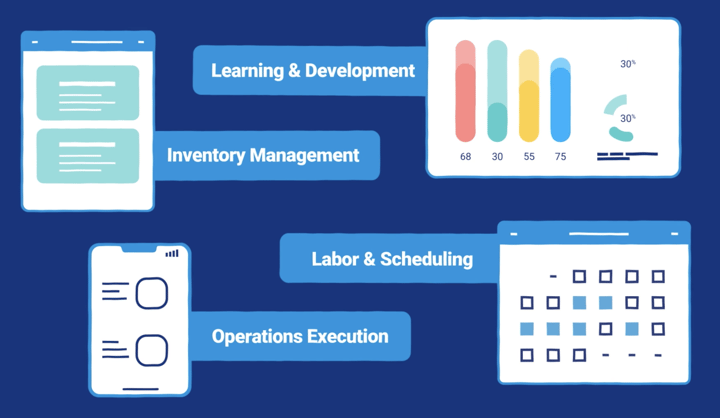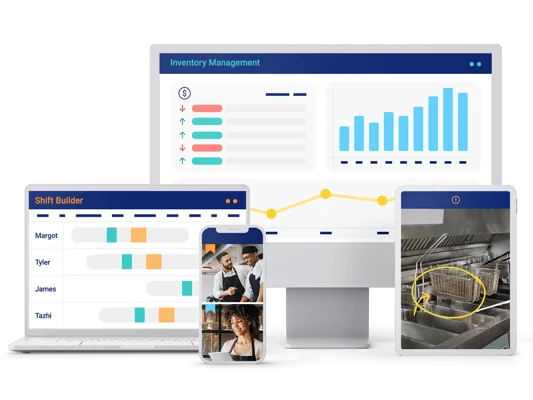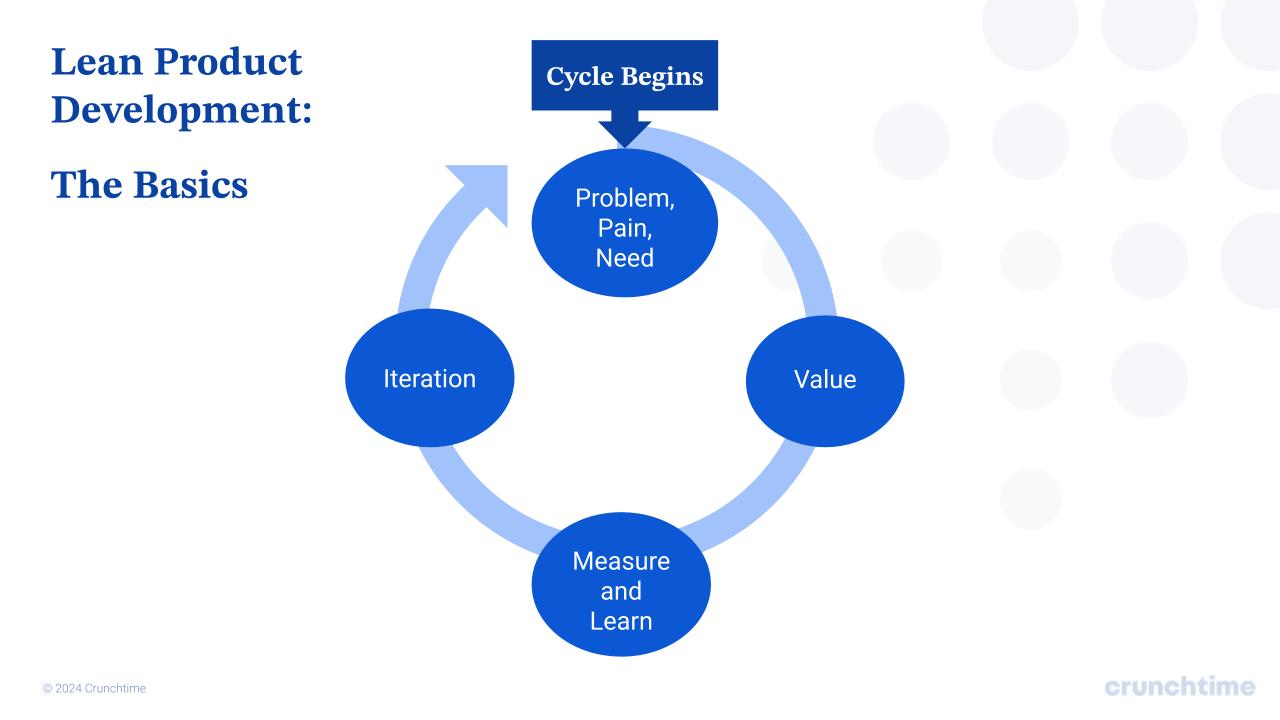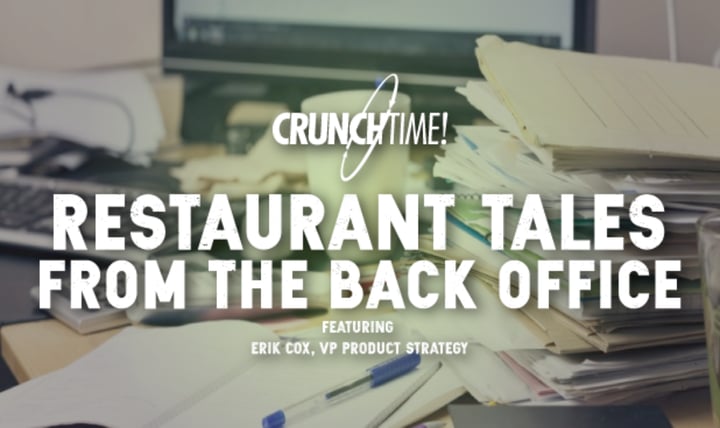
- Home
- Crunchtime Blog
- Product Team Perspective: How Are Crunchtime Products Developed? Part 1

Product Team Perspective: How Are Crunchtime Products Developed? Part 1
Chances are, you’ve probably heard of brands like Chipotle, Domino’s, Dunkin’, Five Guys, and P.F. Chang’s. But what you may not know, is that behind the scenes, those brands, and 500+ more, run their operations on Crunchtime. From inventory and labor to learning and operations execution, our products support the unique needs of the foodservice industry. And, while some of you know and use Crunchtime products every day, others may have only just heard of us–either way, I’ve got you covered. Let’s take a look at everything that goes into building Crunchtime products and why we do it the way we do.
Lean Product Development 101: This Is How We Do It (Cue the music...)
At Crunchtime, we follow a lean product development philosophy. In a nutshell, this means it’s our way of working to build and develop products. But beyond that, it’s also a mindset. It’s how we show up every day to think through how we’re helping our customers.
Lean product development is based on five key guiding principles:
1. Deliver value to your customer (quickly)2. Identify your flow + limit waste
3. Streamline getting to value
4. Empower your team
5. Learn + iterate
Let’s take a closer look at each to better understand how they translate into products that help some of the world’s top brands every day.
1. Deliver value to your customer (quickly)
When we say value, it can mean a lot of different things. Value is really around solutions, and when we’re delivering value, what we're saying is: we've connected with our customers, built empathy around their needs, and identified where there is pain or a problem so that we can solve it through a pre-tested solution. In product land, as I like to call it, we think quickly around value; a new feature, a new capability, or a new enhancement. And while, yes, those are examples of value, value can also be unlocked with a new or updated process.
2. Identify your flow + limit waste
What this really means is figuring out what works for you. It is not one-size-fits-all. Though we all still follow the general way of thinking, there are going to be nuances and variances that bring minor adaptations and tweaks. Identifying flow is all about figuring out what process works for you to get value to your customers. As you get to value quickly, waste can look like avoiding spending development resources, for instance, or spending cycles on something that isn’t valuable to customers at this time.
3. Streamline getting to value
Tying back into the process or flow, we all have a limit on how quickly we can get value out to our customers. This depends on the nature of your business and the limitations that prevent product development teams from moving quickly. So it comes down to determining the fastest, most viable path-to-value without over-optimizing for speed.

Empowerment is a big bucket that covers a lot of different things. A big part of being successful in leveraging the lean product development approach and mindset is team empowerment. Our team members are all experts in their respective fields, on their customers and their needs, so it’s important to enable and empower our team through agency, buy-in, and support to make the right decisions on the value they decide to bring to customers. Empowered teams are successful teams, particularly when they use this mindset and this way of thinking and building products.
5. Learn + iterate
Arguably one of the most important pieces to all of this is all about learning and iterating. At the most basic level, it’s establishing measures of success to ensure a certain product or feature works (i.e., Did we actually solve the problem we set out to address, and if not, how might we make the solution better until we get there?). But, learning can come in all different forms. Once you’ve gotten value to your customer, you want to learn further about it; was that the right value? was there an opportunity to create more value? It’s about picking up a signal and understanding how a solution is performing and then using that signal to inform what we do next.
In my own experience, I’ve seen this methodology work in all types of businesses and contexts, from startups to scaled organizations. The beauty of it is that it scales up or down based on the needs. It’s not about being prescriptive, it’s about adapting what we need in order to achieve delivery of more value for our customers. The value creation will always outweigh the process. The outcomes we are driving are the most important, not the outputs. I’d rather see one feature with high value and great measurement, knowing that the value is what our customer needed, than five different features with unclear-to-no value.
So what have our customers had to say? A long-time customer of our learning and development solution from a major nationwide full-service chain in full service known for its great steaks let me know that the new product development process felt more inclusive and that it gave more voice to the customer. Learning from the feedback we receive from customers helps us implement changes that truly make an impact, like our advanced filters solution and search bar addition to the forms page in operations execution (Zenput). While it may seem like a simple addition, it added value for all of our users, allowing them to quickly and easily find the forms they need.
The last part is people over process. This way of working and thinking is only successful when we run it through the lens of people. Sometimes the process needs to be adapted or removed to help the people who are involved be successful.
To sum it up:
- Growth mindset + lean product development = magic ✨
- Willingness to be wrong, willingness to fail
- Choosing what NOT to work can be equally as valuable as choosing what you will work
Next, I’ll dive into the why—stay tuned.
In the meantime, to learn more about how our products are evolving, visit our product updates page.
Share this post
Related


Restaurant Tales from the Back Office featuring Erik Cox, VP Product Strategy


